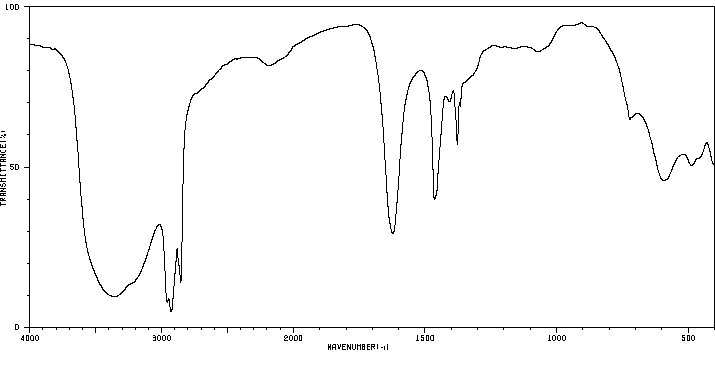Lanthanum(III)chlorideheptahydrate
分子结构分类
中文名称
——
中文别名
——
英文名称
Lanthanum(III)chlorideheptahydrate
英文别名
trichlorolanthanum;heptahydrate
CAS
——
化学式
Cl*Cl2H14LaO7
mdl
——
分子量
371.371
InChiKey
FDFPDGIMPRFRJP-UHFFFAOYSA-K
BEILSTEIN
——
EINECS
——
-
物化性质
-
计算性质
-
ADMET
-
安全信息
-
SDS
-
制备方法与用途
-
上下游信息
-
文献信息
-
表征谱图
-
同类化合物
-
相关功能分类
-
相关结构分类
计算性质
-
辛醇/水分配系数(LogP):-14.76
-
重原子数:11
-
可旋转键数:0
-
环数:0.0
-
sp3杂化的碳原子比例:0.0
-
拓扑面积:7
-
氢给体数:7
-
氢受体数:10
反应信息
-
作为反应物:描述:苯甲酰三氟丙酮 、 1-isopentyl-3-methylimidazolium chloride 、 Lanthanum(III)chlorideheptahydrate 在 potassium hydroxide 作用下, 以 乙醇 为溶剂, 反应 0.24h, 以77%的产率得到参考文献:名称:核磁共振和发光实验揭示了铕离子液体对溶剂极性的结构和对称性适应摘要:通过将 NMR 数据(核 Overhauser 效应和假接触位移)与发光测量相结合,我们揭示了阴离子铕络合物的结构如何因离子对的不同相对接近度而适应不同的溶剂极性。在非极性溶剂中,检测到的接触离子对 (CIP) 表明离子与分子阳离子保持接近,然后扰乱和扭曲阴离子复合物的配位多面体到低对称构型,从而促进发光。不同的是,溶剂分离的离子对出现在极性溶剂中,表明分子离子已经断开。因此,在极性溶剂中,铕络合物阴离子不受分子阳离子的密切影响,使配位多面体增加其对称性,这反过来又降低了阴离子铕络合物的发光。通过额外的光物理测量结合量子化学 RM1 计算证实了由于分子阳离子在非极性溶剂中的紧密接近而导致的配位多面体对称性的降低,这表明在非极性溶剂中,配位多面体的对称点群是C 1,而在极性溶剂中它是D 2d或S 4。使用的非极性溶剂为苯、氯仿和二氯甲烷;极性为丙酮和乙腈。合成的离子液体为四[C 5 mim][La(BTFA)DOI:10.1039/d1dt01050f
文献信息
-
Removal of phosphate from water申请人:——公开号:US20030010722A1公开(公告)日:2003-01-16Methods and compositions for removing phosphate from swimming pool waters are disclosed. The compositions include both soluble and substantially insoluble lanthanide carboxylates, preferred examples being lanthanum glycolate and lactate. The methods include the addition of the lanthanide compounds to the bulk of the pool water, but preferably involve the loading of the pool filter with the composition and the circulation of pool water through the filter to effect the removal of dissolved phosphate in the water.
表征谱图
-
氢谱1HNMR
-
质谱MS
-
碳谱13CNMR
-
红外IR
-
拉曼Raman
-
峰位数据
-
峰位匹配
-
表征信息
同类化合物
镱二氯化物
铥(II)碘化
铕三碘化物
铕(2+)六溴硅酸盐(2-)
钷三氯化物
钕氧基氟化物
超干溴化钕(III)
碘化镱
碘化镨(III)
碘化镧(III)
碘化镥(III)
碘化镝(III)
碘化镝
碘化铽(III)
碘化铥(III)
碘化铕(II)
碘化铒(III), 无水, 粉末
碘化钬
碘化钕(III)
碘化钕(II)
碘化钐(III)
碘化钐
碘化钆
溴化镱
溴化镨(III)
溴化镥
溴化镝(III) 水合物
溴化镝(III)
溴化铽
溴化铥(III)
溴化铕(III) 水合物
溴化铕(III)
溴化铕(II)
溴化铒
溴化铈
溴化钬
溴化钕(III)水合物
溴化钆(III)
水合溴化镱(III)
水合溴化铽
水合溴化钆
水合氯化铈
氯化镱(III)
氯化镱
氯化镨(III) 水合物
氯化镨
氯化镧水合物
氯化镧六水合物
氯化镧
氯化镥(III)







